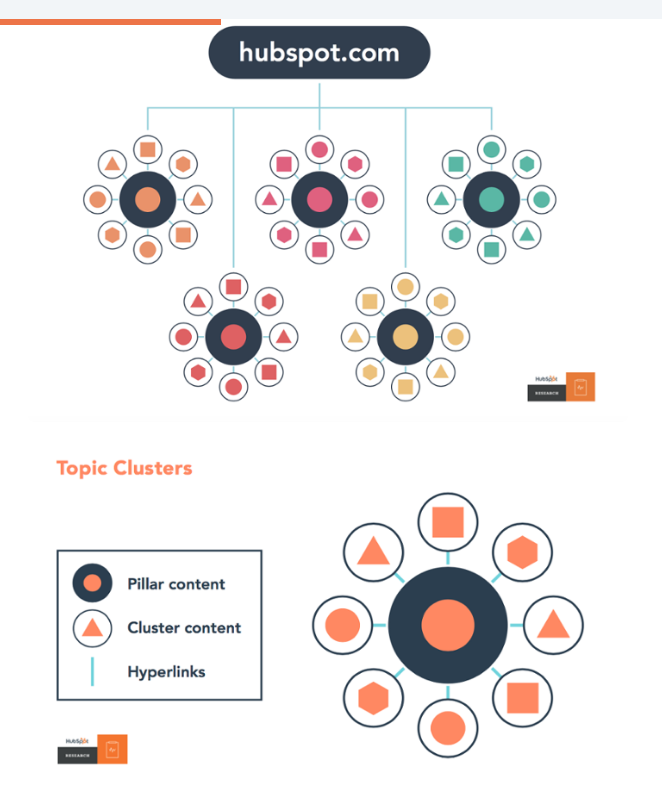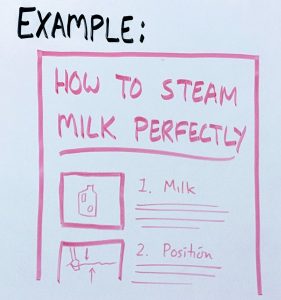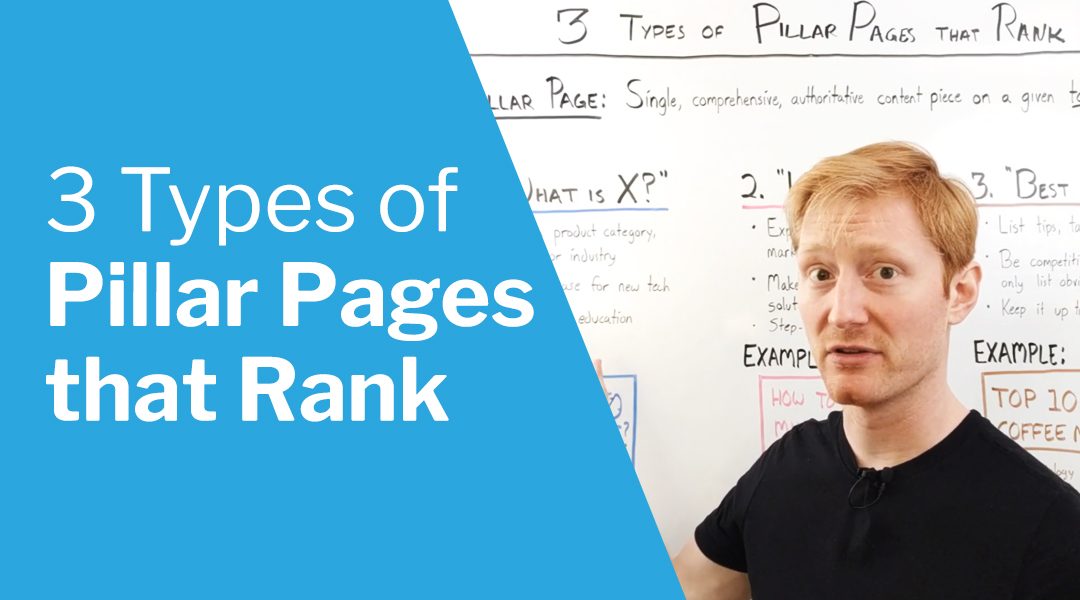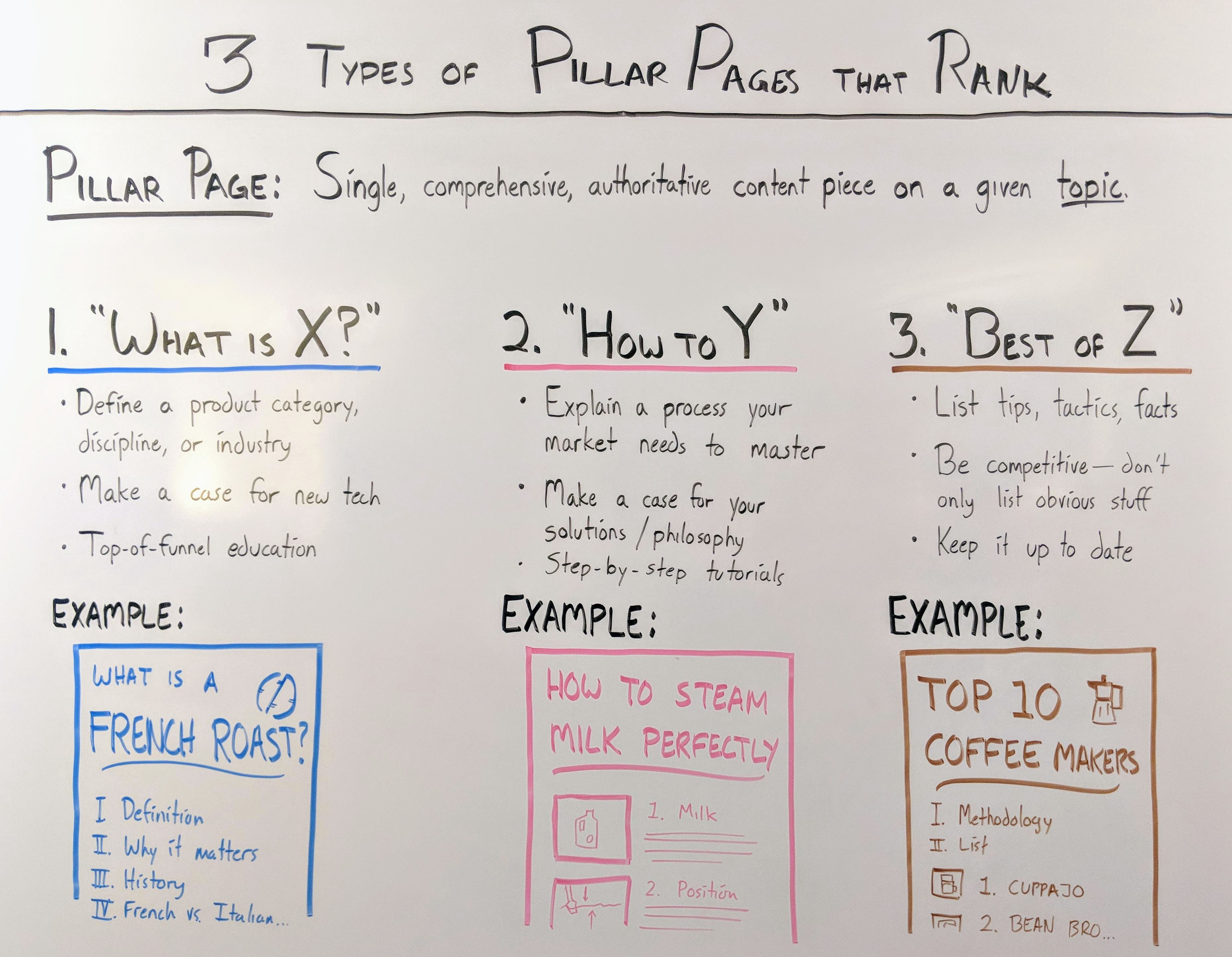NOTE: This post covers some approaches to pillar pages that work regardless of industry. If you want to know how and why pillar pages work in general, as well as a bigger list of types of pillar pages, check out Ryan’s Beginner’s Guide to Pillar Pages.
HubSpot made “Pillar pages” part of the modern content marketing vocabulary in 2017, when they proposed their pillar-cluster SEO strategy. HubSpot completely overhauled their blog, grouping their thousands of blog posts around long-form, comprehensive pages on certain topics that their audience needed to know about.

It’s a smart model—one that acknowledges the ways Google has evolved and frees marketers from the redundant content treadmill. And it’s an approach that has helped HubSpot and other companies (including our clients) get a lot more organic search traffic, and it’s especially handy if you’re trying to do B2B SEO.
But what kind of content makes a good pillar page?
There are all kinds of terrific examples of pillar pages out there—but we’ve noticed three general types of pillar pages that just about any business can create. Enjoy!
Transcript
If you want to get a lot more organic traffic for your business, a good way of doing that is by writing long-form, comprehensive content about certain topics that are interesting to your market. Now, those long-form pieces tend to be called pillar pages by content marketers. Any pillar page just refers to a single, comprehensive, authoritative piece of content on your website that’s about a single topic.
Note: Curious what the differences between pillar pages and Skyscrapers, Cornerstone content, and 10x content? We have a video on that, too.
That page is written to attract all kinds of search traffic to it. Then, of course that page links out to more specific, shorter articles that also link back to the pillar. There’s a whole system of thought that HubSpot has made pretty popular since 2017. And it works for a lot of people. It works for me. It works for my clients. A lot of businesses enjoy this.
There are all kinds of forms that a pillar page can take. But in this video I’m going to show you three that tend to work regardless of what industry you’re in. And they’re pretty simple if you understand the intent behind people’s search.
Of course writing a pillar page isn’t as simple as opening your laptop and hammering out 3,000 words. Otherwise, anyone could rank for anything. It really comes down to what people are trying to learn when they’re googling search terms around a given topic. And that’s where these three types of pillar pages come into play. Let’s jump in.
The first one is just a “What Is” pillar page. It’s definitive. It answers the question, what is this thing? Or what is this concept? Now, this is really valuable if you’re at an innovative start up where you are introducing a new kind of product or a new kind of process. Or even a new philosophy to the market.
1. “What is?” pillar pages
A great way of attracting traffic around that concept, is by writing a definitive guide about it. If you do something really well or you want to educate people on a certain concept, then explaining what it is and making a case for it, or at least making a case for why it’s important, can be a great way to gain organic traffic.
This is really effective for top-of-funnel education. So, these posts tend to attract a lot of searchers where people are in a meeting and a new term comes up and they think, “Oh, well, I’ve never heard that before.” And so they google it and then they look at the pages that come up. This is a great way for your business to be there to educate people as soon as they’re trying to learn about your product category.

For example, let’s say you’re running a coffee website. An opportunity for a “What is” pillar page would just be you saying, “What is a French roast?” And you can start by giving a quick definition, and then tell people why French roast coffee is important. You can dig into the history. You can compare it to other similar concepts, like the differences between French and Italian roasts.
There are all kinds of stuff that you can do to explain what something is. This works really well. This is a really fun kind of post to write because you get to introduce people to a concept. And it should be a concept that is very important to your business.
2. “How to” pillar pages
The second type of pillar page that works really well, is the “How to” pillar page. Instead of explaining what something is, you’re explaining how something is done. It’s really great for helping your market solve certain problems, or perform or improve certain processes that your personas need to do in their jobs.
It’s also a great place to make a case for your product. It shouldn’t be a long-form ad, but if you make a tool or a product that helps people accomplish this, then that’s a great place to plug it in and say, “This is a lot easier when you use our tool.” So you get some top-of-funnel education, but you also get to put in a good word for yourself in these kinds of pages, which makes them pretty fun for marketers.
Step-by-step tutorials work really well for these pages, and using images is usually a good move.

For example, let’s go back to our hypothetical coffee website. You could create a “How to” pillar page on how to steam milk properly. It’s something that a lot of people struggle with and they don’t necessarily know how to do it right the first time. So, you can educate them with a pillar page. That way when people search, “How to steam milk” or “How to make milk foam,” you’ll pull them to that page.
It’s a great way to establish yourself as a thought leader in your space.
3. “Best of” pillar pages
The third kind of pillar page that I’ve seen work really well across industries is the “Best of” pillar page. If you’re a content marketer, you’ve seen these before—they’re the listicles. They’ll list 20 tips or strategies or facts about certain items. It’s just a straight list of valuable things to your market, grouped around a certain topic.
The key here is to be competitive. You don’t just want to throw out a bunch obvious list items because then that’s not really valuable. There’s not really a lot of reason for anyone to pay attention to your piece of content if it’s just like every other piece of content out there.

For example, back to the coffee website. You could write a “Best of” pillar page that goes into the top 10 coffee makers. Get into details, show why certain items are more valuable, or more preferable than others. That’s going to be really valuable to your audience.
You can mix and match
These page approaches aren’t mutually exclusive. In fact, a lot of times, you’ll find “beginner’s guides” or “ultimate guides” to certain topics that bring in elements of all of these. It’s not uncommon to have a definitive guide (What is) that brings in some recommended processes (How to) and then maybe a list of hacks and tips (Best of). That’s quite common.
The important thing to know is that these are three really big, high-level categories of pillar page content that works. It gets links. It educates people. It builds your brand. And it brings in that organic traffic that you’re going after.
Curious just how long your pillar page should be? Check out our guide to blog post length!



